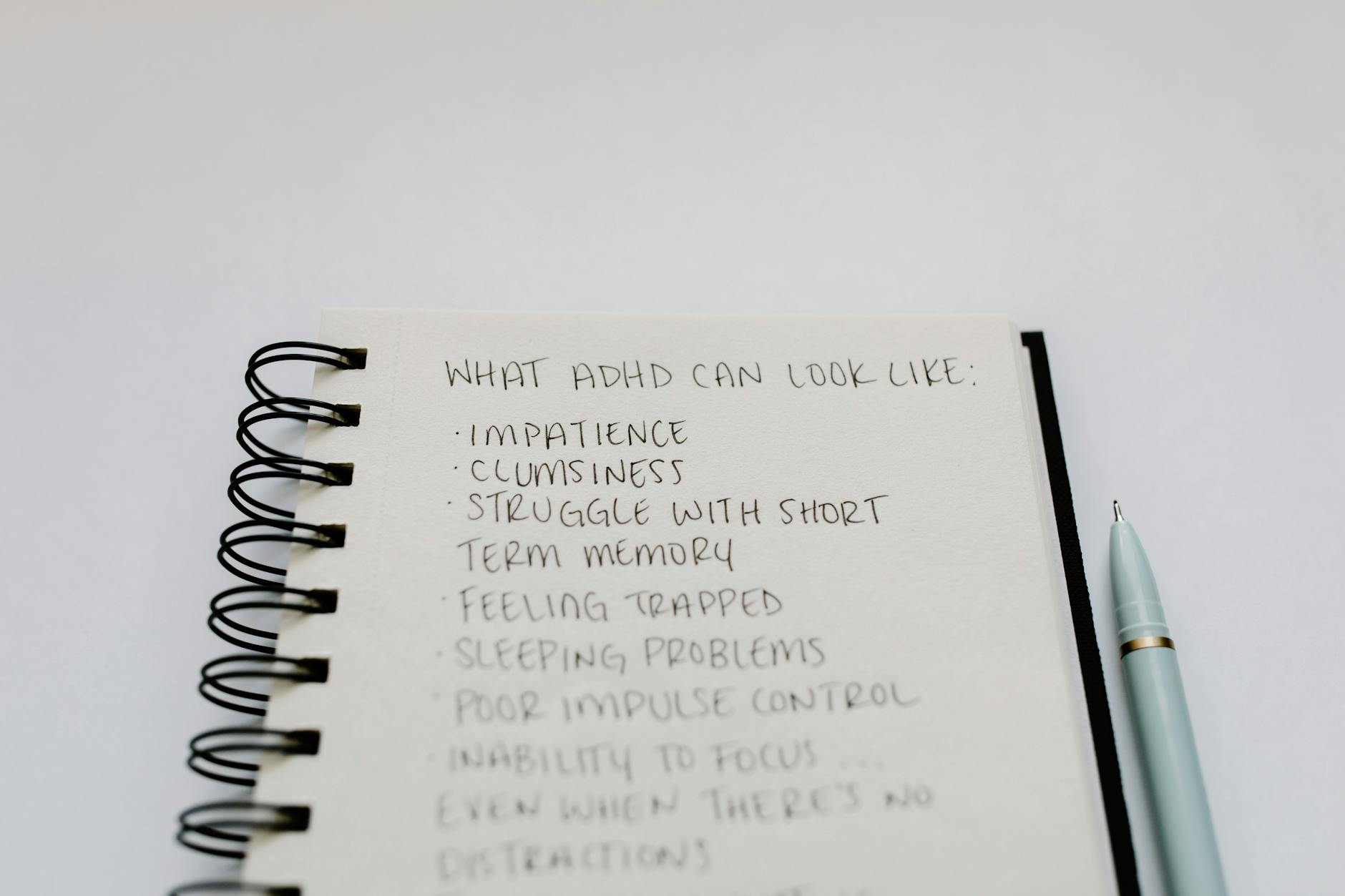
Imagine a life free from the weight of past trauma—a life where you feel empowered, confident, and at peace. For many, this may seem like an impossible dream. But what if we told you that healing from trauma is not only possible but within your reach?
The journey to recovery might feel daunting, but you're not alone. Millions of people worldwide are silently struggling with the aftermath of traumatic experiences. Whether it's childhood abuse, a devastating loss, or a life-altering accident, trauma can leave deep scars that affect every aspect of our lives. But here's the good news: you have the power to reclaim your life and start healing today.
In this blog post, we'll explore seven crucial steps to begin your healing journey. From understanding the nature of trauma to reconnecting with others and moving forward, we'll guide you through a transformative process that can help you break free from the chains of your past. Are you ready to take the first step towards a brighter, more fulfilling future? Let's dive in and discover how you can start healing from trauma today.

Understanding Trauma
Defining trauma and its effects
Trauma is a deeply distressing or disturbing experience that overwhelms an individual's ability to cope. It can result from various events, such as physical or sexual abuse, natural disasters, accidents, or witnessing violence. The effects of trauma can be far-reaching, impacting a person's mental, emotional, and physical well-being.
Trauma affects each person differently, but common effects include:
- Persistent anxiety and fear
- Depression and mood swings
- Difficulty sleeping or nightmares
- Flashbacks or intrusive thoughts
- Changes in appetite and weight
- Physical symptoms like headaches or stomach issues
- Difficulty concentrating or making decisions
Understanding these effects is crucial for recognizing the need for healing and support.
Recognizing symptoms of trauma
Identifying trauma symptoms is an essential step in the healing process. While symptoms can vary, some common signs include:
1. Emotional symptoms:
- Intense and unpredictable emotions
- Feeling numb or disconnected
- Irritability or angry outbursts
- Guilt or shame
2. Cognitive symptoms:
- Memory problems
- Difficulty concentrating
- Negative self-perception
- Intrusive thoughts or memories
3. Behavioral symptoms:
- Avoidance of people, places, or activities
- Withdrawal from relationships
- Substance abuse or other risky behaviors
- Changes in sleep patterns or eating habits
It's important to note that these symptoms may not appear immediately after a traumatic event and can manifest weeks, months, or even years later.
The importance of seeking help
Recognizing the need for professional help is a crucial step in healing from trauma. Here's why seeking help is essential:
| Reasons for Seeking Help | Benefits |
|---|---|
| Professional expertise | Access to evidence-based treatments and coping strategies |
| Emotional support | A safe space to process feelings and experiences |
| Skill development | Learning techniques to manage symptoms and improve well-being |
| Validation and understanding | Feeling heard and validated in your experiences |
| Prevention of long-term effects | Addressing trauma early can prevent chronic mental health issues |
Seeking help doesn't mean you're weak or incapable of handling your emotions. It's a brave and proactive step towards healing and reclaiming your life. Mental health professionals, such as therapists or counselors specializing in trauma, can provide valuable guidance and support throughout your healing journey.
Remember, healing from trauma is a process that takes time and patience. By understanding trauma, recognizing its symptoms, and seeking help, you're taking the first crucial steps towards recovery and building a foundation for a healthier, more resilient future.

Creating a Safe Environment
As we begin to navigate the healing journey, establishing a safe environment is crucial for trauma recovery. This foundation of safety allows you to feel secure and supported as you work through your experiences.
Establishing Physical Safety
Creating physical safety is the first step in building a secure environment. This involves:
- Securing your living space
- Removing potential triggers
- Creating a comfortable retreat area
To ensure your physical safety, consider the following measures:
| Action | Purpose |
|---|---|
| Install reliable locks | Enhance security and peace of mind |
| Set up proper lighting | Improve visibility and reduce anxiety |
| Organize living space | Create a sense of order and control |
| Remove or secure potential weapons | Eliminate immediate threats |
Building Emotional Security
Emotional security is equally important in your healing process. To foster emotional safety:
- Practice self-compassion
- Set clear boundaries
- Develop a consistent routine
- Engage in calming activities
Creating a "safety toolkit" can be helpful. This might include:
- Comforting objects (e.g., soft blanket, favorite book)
- Grounding techniques (e.g., deep breathing exercises, mindfulness practices)
- Positive affirmations or mantras
- List of emergency contacts
Developing a Support Network
A strong support network is essential for long-term healing. To build your support system:
- Identify trustworthy individuals
- Communicate your needs clearly
- Join support groups or therapy sessions
- Cultivate relationships with understanding professionals
Consider creating a contact list of supportive people:
| Type of Support | Contact Information |
|---|---|
| Therapist | [Name and phone number] |
| Trusted friend | [Name and phone number] |
| Support group | [Meeting times and location] |
| Crisis hotline | [Hotline number] |
Remember, building a safe environment is an ongoing process. As you progress in your healing journey, you may need to adjust your safety measures. Be patient with yourself and celebrate small victories along the way.
With a secure foundation in place, you'll be better equipped to embrace self-care practices, which we'll explore in the next section. These practices will further support your healing process and help you regain a sense of control and well-being.

Processing Traumatic Experiences
As we delve deeper into the healing journey, it's time to explore one of the most crucial steps: processing traumatic experiences. I've found that this phase can be challenging, but it's also incredibly transformative. Let's explore some effective methods I've discovered for processing trauma.
Journaling for Self-reflection
One of the most powerful tools I've encountered in my healing journey is journaling. It's a simple yet profound way to explore my thoughts and feelings about traumatic experiences. Here's how I approach journaling:
- Set aside dedicated time each day for writing
- Start with free-writing, allowing thoughts to flow without judgment
- Use prompts to dig deeper into specific emotions or memories
- Review entries periodically to track progress and identify patterns
I've found that journaling not only helps me process trauma but also provides valuable insights into my healing process.
Practicing Grounding Techniques
When processing trauma, I often experience overwhelming emotions or flashbacks. That's where grounding techniques come in handy. These are my go-to methods for staying present and centered:
- 5-4-3-2-1 Sensory Exercise
- Deep breathing exercises
- Progressive muscle relaxation
- Mindfulness meditation
Here's a quick comparison of these techniques:
| Technique | Time Required | Difficulty Level | Benefits |
|---|---|---|---|
| 5-4-3-2-1 Sensory Exercise | 2-5 minutes | Easy | Quickly refocuses attention |
| Deep breathing | 5-10 minutes | Easy | Reduces anxiety and stress |
| Progressive muscle relaxation | 15-20 minutes | Moderate | Releases physical tension |
| Mindfulness meditation | 10-30 minutes | Moderate to Hard | Improves overall awareness |
I make sure to practice these techniques regularly, not just during moments of distress. This helps me build resilience and makes the techniques more effective when I really need them.
Exploring Therapy Options
While self-help techniques are valuable, I've found that professional support is often crucial in processing trauma. There are several therapy options I've explored:
- Cognitive Behavioral Therapy (CBT)
- Eye Movement Desensitization and Reprocessing (EMDR)
- Somatic Experiencing
- Dialectical Behavior Therapy (DBT)
Each of these approaches offers unique benefits, and I've learned that it's important to find the right fit for my individual needs. I always recommend consulting with a mental

Developing Coping Strategies
Now that we've explored ways to process traumatic experiences, let's focus on developing effective coping strategies to help you navigate the healing journey.
Identifying triggers
Recognizing triggers is a crucial step in managing trauma-related reactions. Triggers can be sensory experiences, situations, or memories that remind you of the traumatic event. To identify your triggers:
- Keep a journal to track emotional responses
- Notice patterns in your behavior
- Pay attention to physical reactions
- Be mindful of your thoughts and emotions
Once you've identified your triggers, you can develop strategies to manage them more effectively.
Learning stress management techniques
Stress management is essential for trauma survivors. Here are some effective techniques to help you cope with stress:
- Deep breathing exercises
- Progressive muscle relaxation
- Mindfulness meditation
- Guided imagery
- Yoga or gentle stretching
| Technique | Benefits | Time Commitment |
|---|---|---|
| Deep breathing | Reduces anxiety, lowers heart rate | 5-10 minutes daily |
| Mindfulness meditation | Improves focus, reduces rumination | 10-20 minutes daily |
| Yoga | Increases body awareness, promotes relaxation | 20-60 minutes, 2-3 times weekly |
Experiment with these techniques to find what works best for you and incorporate them into your daily routine.
Building resilience
Resilience is the ability to bounce back from adversity. To build resilience:
- Set realistic goals and work towards them
- Cultivate a positive outlook
- Learn from past experiences
- Develop problem-solving skills
- Maintain a strong support network
Remember that building resilience is a gradual process. Be patient with yourself as you develop this important skill.
Practicing self-compassion
Self-compassion is crucial for healing from trauma. It involves treating yourself with kindness and understanding, especially during difficult times. To practice self-compassion:
- Acknowledge your pain without judgment
- Recognize that suffering is a universal human experience
- Use positive self-talk and affirmations
- Treat yourself as you would treat a close friend
- Engage in activities that nurture your well-being
By incorporating these coping strategies into your life, you'll be better equipped to handle challenges and continue on your healing journey. Remember that healing is not linear, and it's okay to have setbacks. The key is to be patient and persistent in your efforts to develop and apply these coping skills.
As we move forward, we'll explore the importance of reconnecting with others and how social support can play a vital role in your recovery process.

Reconnecting with Others
As you progress on your healing journey, rebuilding connections with others becomes a crucial step. Trauma can often leave us feeling isolated and disconnected, but reconnecting with people is an essential part of the recovery process. Let's explore how you can navigate this important aspect of healing.
Rebuilding Trust
Rebuilding trust after experiencing trauma can be challenging, but it's a vital component of reconnecting with others. Here are some strategies to help you rebuild trust:
- Start small: Begin with low-risk interactions and gradually increase your level of vulnerability.
- Practice self-compassion: Understand that trust-building takes time and be patient with yourself.
- Identify safe people: Focus on individuals who have consistently shown support and understanding.
- Communicate openly: Share your feelings and experiences when you feel ready and comfortable.
| Trust-Building Action | Benefits |
|---|---|
| Consistent communication | Establishes reliability and predictability |
| Honoring commitments | Demonstrates dependability |
| Active listening | Shows respect and validation |
| Expressing gratitude | Strengthens positive connections |
Communicating Boundaries
Setting and communicating healthy boundaries is crucial for maintaining your well-being while reconnecting with others. Here's how you can effectively communicate your boundaries:
- Identify your limits: Reflect on what you're comfortable with and what feels overwhelming.
- Use clear language: Express your boundaries directly and without ambiguity.
- Be firm yet respectful: Maintain a balance between assertiveness and consideration for others.
- Practice consistency: Uphold your boundaries consistently to reinforce their importance.
Remember, healthy boundaries are not walls; they're guidelines that help you feel safe and respected in your relationships.
Seeking Healthy Relationships
As you reconnect with others, it's important to focus on cultivating healthy relationships that support your healing process. Consider these aspects when seeking and nurturing positive connections:
- Mutual respect: Look for relationships where both parties value and honor each other's boundaries and feelings.
- Emotional safety: Seek out people who create a non-judgmental space for you to express yourself.
- Shared values: Connect with individuals who align with your core values and life goals.
- Support and encouragement: Surround yourself with people who uplift and motivate you on your healing journey.
Building a support network of healthy relationships can significantly contribute to your overall well-being and recovery. It's okay to be selective about who you allow into your inner circle during this vulnerable time.
As you work on reconnecting with others, remember that it's a gradual process. Each small step you take in rebuilding trust, communicating boundaries, and fostering healthy relationships is a significant achievement in your healing journey. Be patient with yourself and celebrate the progress you make along the way.

Moving Forward
Now that we've explored various aspects of healing from trauma, it's time to focus on moving forward and embracing a new chapter in life. This final step in your journey is about setting a positive course for the future while acknowledging the progress you've made.
Setting Realistic Goals
Setting achievable goals is crucial for continued growth and healing. Start by breaking down larger objectives into smaller, manageable tasks. This approach helps prevent overwhelming feelings and allows for a sense of accomplishment along the way.
Here's a table outlining examples of realistic goals for trauma survivors:
| Short-term Goals | Medium-term Goals | Long-term Goals |
|---|---|---|
| Practice daily self-care | Attend therapy sessions regularly | Develop meaningful relationships |
| Identify triggers | Learn new coping mechanisms | Pursue career aspirations |
| Establish a sleep routine | Join a support group | Travel to new places |
| Practice mindfulness | Engage in a new hobby | Write a memoir or blog |
Remember, goals should be SMART: Specific, Measurable, Achievable, Relevant, and Time-bound.
Celebrating Small Victories
Recognizing and celebrating progress, no matter how small, is essential for maintaining motivation and building self-esteem. Here are some ways to acknowledge your achievements:
- Keep a victory journal to document daily successes
- Share accomplishments with trusted friends or family members
- Treat yourself to something special after reaching a milestone
- Create a visual representation of your progress, like a growth chart or vision board
Embracing Personal Growth
Healing from trauma often leads to significant personal growth. Embrace this transformation by:
- Cultivating self-awareness
- Challenging negative thought patterns
- Developing new skills and interests
- Practicing self-compassion and forgiveness
Remember that growth is not linear, and setbacks are a normal part of the process. Be patient with yourself and focus on overall progress rather than perfection.
Finding Meaning and Purpose
As you continue to heal, finding meaning and purpose in your experiences can be incredibly empowering. This process, known as post-traumatic growth, involves deriving positive changes from adversity. Consider these approaches:
- Volunteer or support others who have experienced similar trauma
- Advocate for causes related to trauma awareness and prevention
- Explore creative outlets to express your journey, such as art or writing
- Pursue education or career opportunities that align with your newfound strengths
By actively engaging in these areas, you're not only furthering your own healing but potentially making a positive impact on others as well.
As we conclude this guide on healing from trauma, remember that your journey is unique and ongoing. Each step forward, no matter how small, is a testament to your resilience and strength. Continue to nurture your growth, celebrate your progress, and embrace the possibilities that lie ahead in your path to healing and personal transformation.

Healing from trauma is a deeply personal journey that requires patience, self-compassion, and commitment. By understanding the nature of trauma, creating a safe environment, and prioritizing self-care, you can lay the foundation for your healing process. As you work through processing traumatic experiences and developing effective coping strategies, remember that progress may not always be linear, but every step forward is significant.
Reconnecting with others and moving forward are crucial aspects of your healing journey. While it may feel challenging at times, remember that you are not alone. Seeking support from trusted friends, family, or professional therapists can provide invaluable guidance and encouragement. As you continue on your path to healing, be kind to yourself and celebrate each milestone, no matter how small. Your journey towards healing and growth is possible, and with perseverance and self-compassion, you can reclaim your sense of safety, trust, and joy in life.
